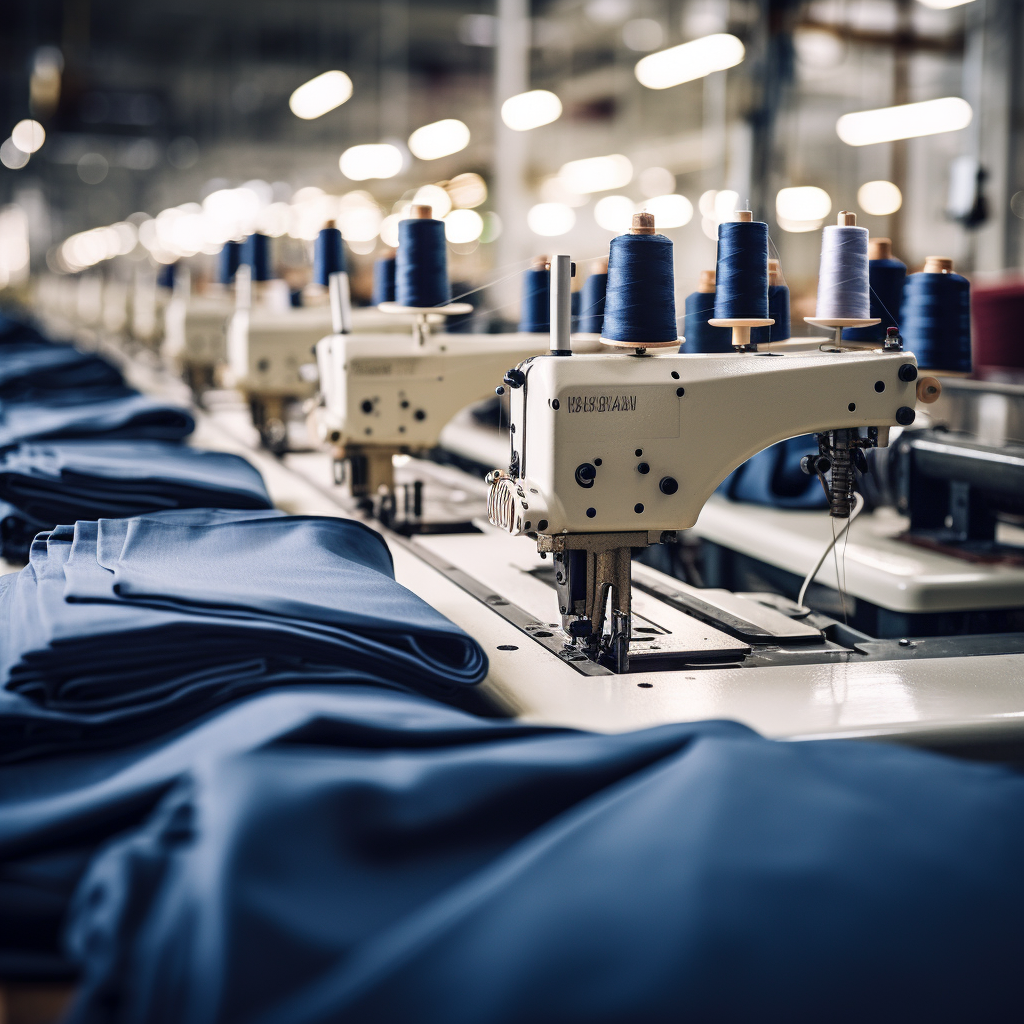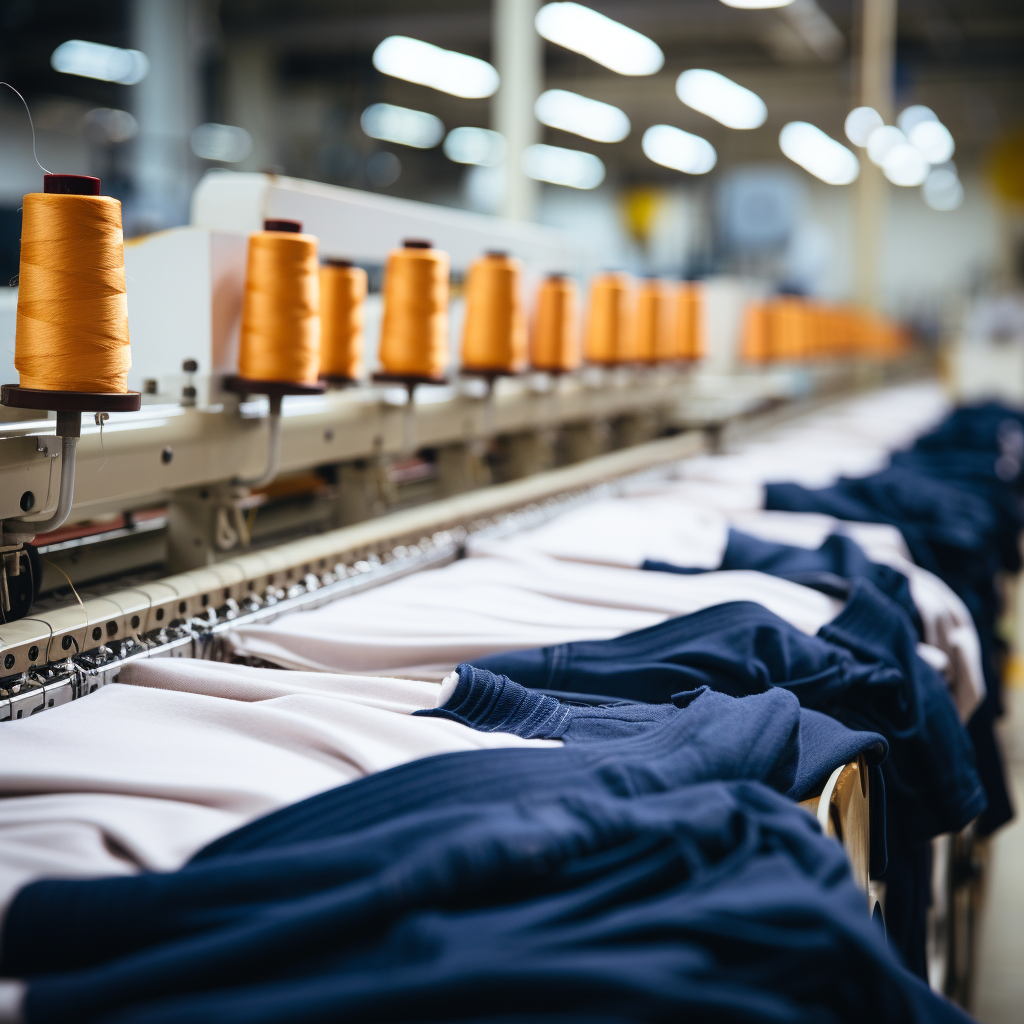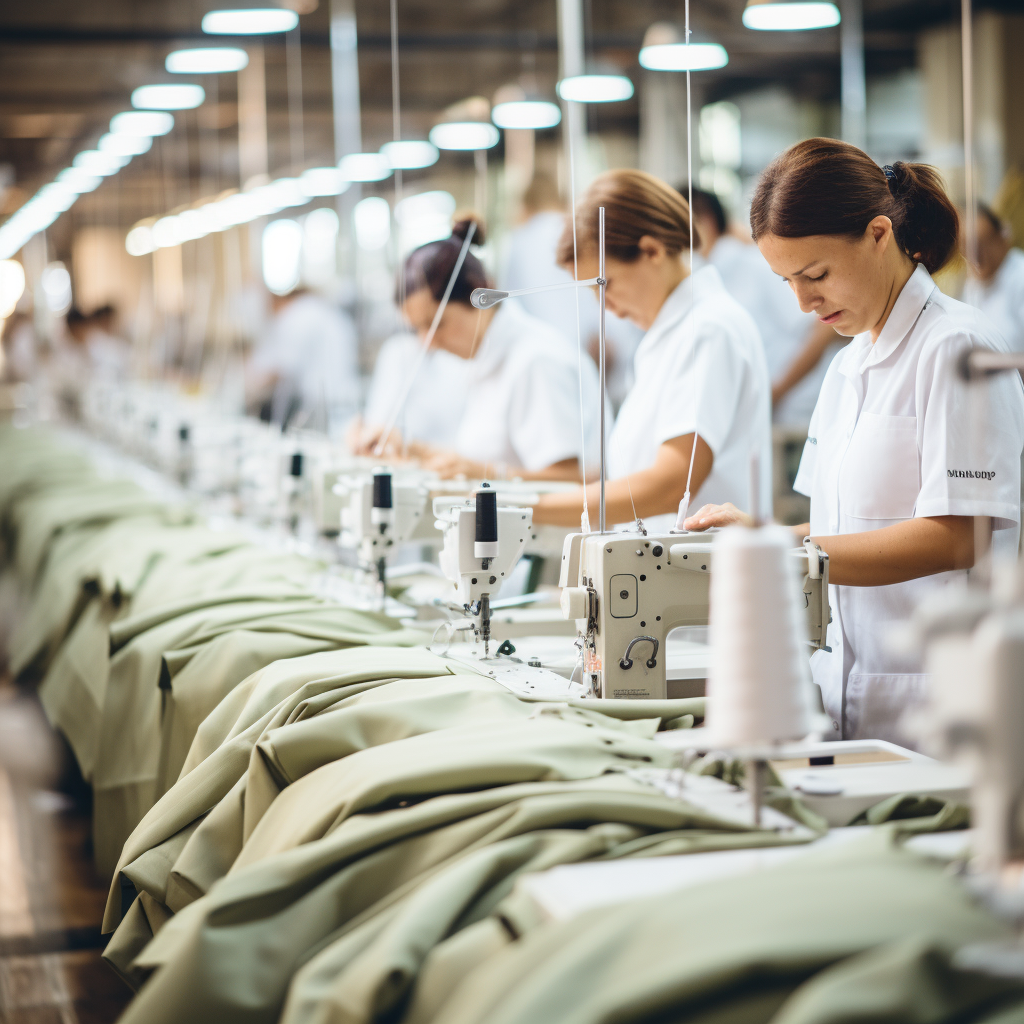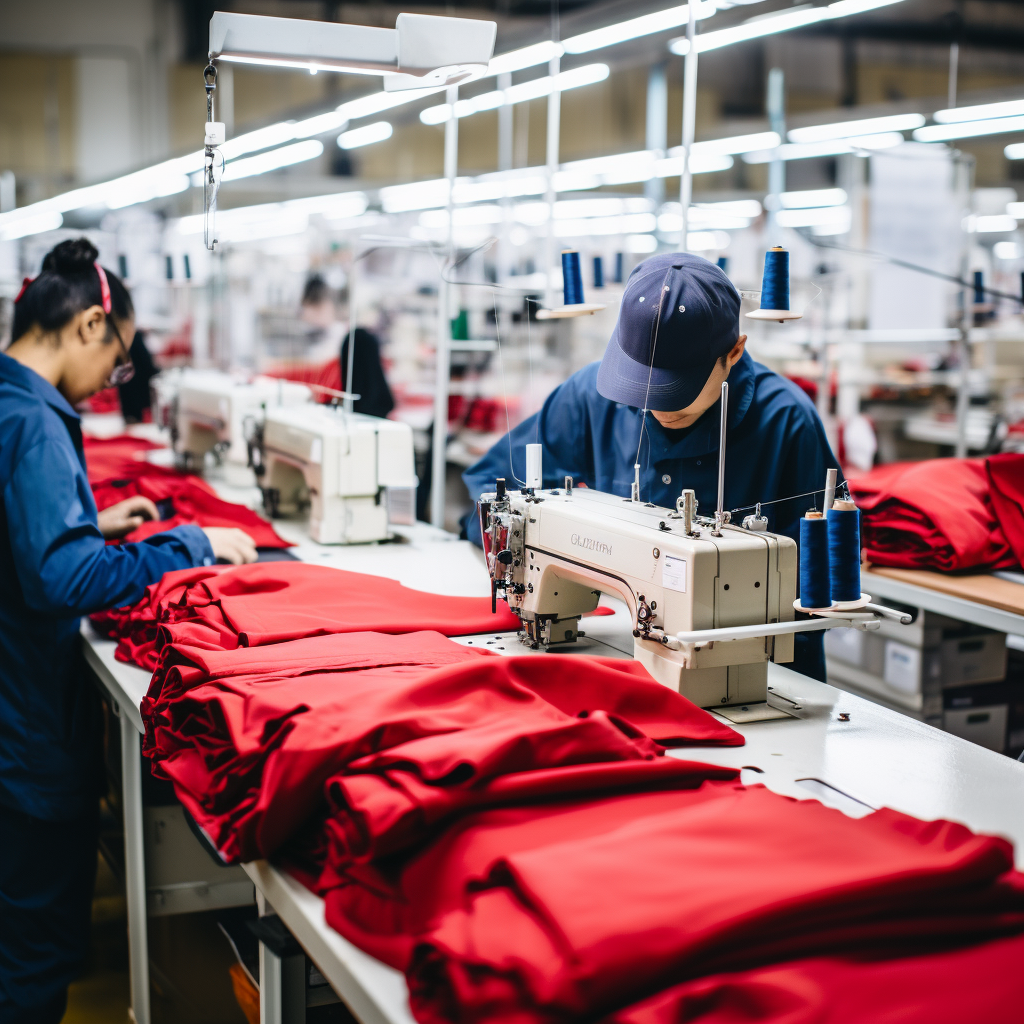Introduction
The United Arab Emirates, a fast-growing global hub for business and innovation, boasts a flourishing textile and clothing industry, with Abu Dhabi standing at the forefront. While the emirate is often overshadowed by the dazzling cityscape of Dubai, Abu Dhabi’s clothing manufacturing sector offers untapped opportunities, particularly for small businesses.
Abu Dhabi, the capital city, has made significant strides in diversifying its economy away from oil. Among its growth sectors, clothing manufacturing is garnering attention, driven by the government’s vision to spur non-oil industries, its strategic location, and access to high-quality raw materials.
Clothing manufacturing, the process of converting fabrics into wearable garments, includes various operations such as designing, cutting, sewing, and finishing. The comprehensive process makes it a labor-intensive industry, which Abu Dhabi supports through its robust workforce.
The emirate’s clothing industry caters to a vast range of preferences, ranging from traditional Arabian attire such as Abayas and Kanduras to contemporary western fashion. This versatility makes Abu Dhabi an ideal place for small businesses to thrive, offering flexibility in manufacturing diverse clothing lines.
| Advantages | Description |
|---|---|
| Diversity | Abu Dhabi’s clothing industry caters to a wide range of tastes and preferences. |
| Labor Force | The emirate supports a robust and skilled workforce, making it ideal for labor-intensive industries like clothing manufacturing. |
| Government Support | The government is actively promoting non-oil sectors, including clothing manufacturing. |

Understanding Small Business Manufacturing
Small business manufacturing, an essential cog in the global economic machine, refers to enterprises with a modest scale of production and workforce, yet possessing significant potential for growth and innovation. In the context of clothing manufacturing in Abu Dhabi, small businesses are those that produce limited but highly specialized or custom batches of apparel.
Small businesses often focus on niche markets, allowing them to provide unique value to a specific customer segment. They are also more agile and adaptable to market trends, and can offer personalized customer service, which can be a significant advantage in a highly competitive industry like clothing manufacturing.
In Abu Dhabi’s garment industry, small business manufacturers are involved in the production of a variety of clothing items, serving both local and international markets. These manufacturers might specialize in traditional Emirati clothing, workwear, uniforms, or fashion-forward clothing, among other categories.
| Small Business Advantages | Description |
|---|---|
| Market Niche | Small businesses often focus on niche markets, providing unique value to a specific customer segment. |
| Agility | Small businesses are more adaptable to market trends and changes. |
| Personalized Customer Service | Small businesses can offer tailored services, leading to higher customer satisfaction. |
Top Small-scale Clothing Manufacturers in Abu Dhabi
3.1 Silver Thread Garments Manufacturing
Located at the heart of Abu Dhabi, Silver Thread Garments Manufacturing is renowned for its specialization in traditional Emirati clothing. The company provides a range of garments, from Abayas and Kanduras to more contemporary adaptations of these classic designs.
What sets Silver Thread apart is their commitment to quality and authenticity, all the while incorporating modern fashion trends. The company sources high-quality fabrics and employs skilled craftsmen who bring a touch of personalization to each piece.
| Strengths | Description |
|---|---|
| Specialization | Specializes in traditional Emirati clothing with a modern twist. |
| Quality | Uses high-quality fabrics and skilled craftsmanship. |
| Personalization | Offers customized designs for each piece. |
3.2 Golden Loom Textiles & Garments
Golden Loom Textiles & Garments is an Abu Dhabi-based manufacturer that focuses on workwear and uniforms. This includes apparel for healthcare, hospitality, security, and corporate sectors.
The company’s strength lies in its ability to provide durable, comfortable, and professionally designed workwear that adheres to industry-specific standards. Additionally, Golden Loom offers services such as logo embroidery and customized designs, enhancing brand representation for their clients.
| Strengths | Description |
|---|---|
| Specialization | Concentrates on workwear and uniforms across various industries. |
| Durability & Comfort | Produces garments that are durable and comfortable, meeting industry standards. |
| Brand Representation | Offers logo embroidery and customized designs for enhanced brand image. |
3.3 Rainbow Stitch Clothing Production
Rainbow Stitch Clothing Production caters to the fashion-forward consumer, offering a mix of trendy and timeless designs. Located in Abu Dhabi, Rainbow Stitch excels in both womenswear and menswear, keeping an eye on international fashion trends.
The company is known for its creative design team that consistently produces stylish, unique garments. They prioritize sustainable practices, using eco-friendly materials and ensuring fair labor conditions in their production process.
| Strengths | Description |
|---|---|
| Specialization | Focuses on trendy, fashion-forward clothing. |
| Creativity | Houses a creative design team for unique garments. |
| Sustainability | Uses eco-friendly materials and follows fair labor practices. |

The Manufacturing Process
Manufacturing garments involve a sequence of intricate processes. Understanding these steps is crucial for small businesses to ensure smooth cooperation with manufacturers. Here’s a simplified breakdown:
1. Design: This initial stage involves creating the design of the garment. It encompasses sketching, fabric and color selection, and pattern making. In small businesses, the designs usually cater to a specific niche or trend.
2. Sampling: The designs are brought to life in the form of samples. This step allows for adjustments in design, fit, and choice of fabric. Samples also help in estimating cost of production.
3. Sourcing Materials: This involves procuring the necessary fabric, threads, buttons, zippers, and other embellishments. The choice of materials impacts the quality, cost, and sustainability of the end product.
4. Cutting: The fabric is cut according to the patterns established in the design stage. Precision is crucial here to ensure consistency in the garment’s size and shape.
5. Sewing: The cut fabric pieces are sewn together. This stage is labor-intensive and requires skilled workers to ensure quality.
6. Finishing: After sewing, the garments undergo various finishing processes, such as pressing, checking for defects, and adding final touches like labels and tags.
7. Packaging and Delivery: The finished garments are then packaged and prepared for delivery to the client or distribution centers.
| Process Steps | Description |
|---|---|
| Design | Creating the garment’s design and pattern. |
| Sampling | Producing sample pieces for design validation and cost estimation. |
| Sourcing Materials | Procuring necessary fabric and accessories. |
| Cutting | Cutting fabric as per the pattern. |
| Sewing | Assembling the garment by sewing fabric pieces together. |
| Finishing | Final checks and addition of labels and tags. |
| Packaging and Delivery | Preparing the finished garments for delivery or distribution. |
Understanding the Costs Involved in Clothing Manufacturing
Investing in clothing manufacturing necessitates an understanding of the associated costs. Here’s an overview of typical expenditures:
1. Design Costs: This includes costs for design software, sketching materials, and potentially, hiring designers.
2. Material Costs: The price of fabrics, threads, and accessories significantly impacts the overall cost. Quality and sustainability of materials often dictate the price.
3. Production Costs: These are costs incurred in the manufacturing process, including cutting, sewing, and finishing. They depend on labor costs, factory overheads, and the complexity of the design.
4. Sampling Costs: Before mass production, samples are created for each design. This incurs costs for material, labor, and any necessary adjustments.
5. Packaging and Shipping Costs: The costs for packing materials and freight charges for delivering the finished products should be factored in.
6. Miscellaneous Costs: These are unexpected expenses that may arise, such as equipment repair or additional quality checks.
| Cost Type | Description |
|---|---|
| Design Costs | Expenses for designing, including software and professional fees. |
| Material Costs | Cost of fabrics, threads, and accessories. |
| Production Costs | Expenses related to the actual manufacturing process. |
| Sampling Costs | Costs for creating and refining sample pieces. |
| Packaging and Shipping Costs | Expenses for packing materials and freight charges. |
| Miscellaneous Costs | Unexpected expenses that may occur. |

Future Trends and Challenges in Abu Dhabi’s Clothing Manufacturing
In the evolving landscape of Abu Dhabi’s clothing manufacturing industry, being aware of future trends and potential challenges is key for any small business aiming to remain competitive. Here are some to consider:
Future Trends:
- Sustainable Practices: With increasing awareness of environmental impact, sustainability is becoming a significant trend. This can manifest as the use of eco-friendly materials, reduced water consumption, and minimized waste in the production process.
- Technological Integration: Digitalization is revolutionizing the industry. From 3D design software to AI-driven trend forecasting and automation in production, technology plays a vital role in future growth.
- Personalized Clothing: The demand for personalized or custom-made clothing is growing. This trend opens up new opportunities for small businesses that can cater to unique, individual customer preferences.
Challenges:
- Competition: The clothing manufacturing industry is highly competitive. With numerous small and large-scale manufacturers, standing out requires innovation, quality, and strong customer relationships.
- Regulatory Compliance: Staying compliant with local and international regulations can be complex. These may pertain to labor laws, environmental standards, or trade policies.
- Fluctuating Material Costs: The price of raw materials can fluctuate due to factors like demand, availability, and geopolitical issues. This unpredictability can pose a challenge to cost estimation and profitability.
| Future Trends | Description |
|---|---|
| Sustainable Practices | Adoption of eco-friendly materials and practices. |
| Technological Integration | Use of digital tools in design, production, and trend analysis. |
| Personalized Clothing | Increased demand for custom-made, unique garments. |
| Challenges | Description |
|---|---|
| Competition | High competition in the clothing manufacturing industry. |
| Regulatory Compliance | Need to adhere to local and international regulations. |
| Fluctuating Material Costs | Unpredictability in the cost of raw materials. |
Conclusion:
As we delve into the final chapter of this comprehensive guide, it’s clear that the prospects for small businesses in the clothing manufacturing industry in Abu Dhabi are exciting and filled with potential. There are, however, challenges to navigate and trends to adapt to, making it an equally daunting journey.
The region’s focus on economic diversification and support for small and medium enterprises provides a fertile ground for small businesses. Abu Dhabi, with its strategic location and robust infrastructure, is an ideal setting for clothing manufacturers to grow and thrive.
Embracing future trends such as sustainability and technological integration is no longer an option but a necessity. Adopting eco-friendly practices and digital tools in design, production, and trend analysis can significantly enhance efficiency, cost-effectiveness, and competitiveness.
Despite the increasing competition, small businesses can carve their niche by focusing on unique offerings, such as personalized or culturally significant clothing. Building strong relationships with customers and maintaining a reputation for quality and reliability can also give small businesses an edge in this competitive industry.
However, challenges like regulatory compliance and fluctuating material costs can pose hurdles. Small businesses need to stay informed about local and international laws and trade policies, ensuring their practices are compliant. Likewise, developing strategies to manage unpredictable costs can aid in maintaining profitability.
In conclusion, the journey of a small business in Abu Dhabi’s clothing manufacturing sector can be challenging, but it’s a journey worth embarking on. With the right knowledge, preparation, and strategies, small businesses can not only survive but thrive in this dynamic industry.
You may also like
-
Automatic Fruit Wine Bottling Line for Small Wineries: A Complete Guide
-
How Does Plywood HSN Code Decide the GST Rate for Traders and Manufacturers?
-
POS Terminal Type: Which Is Best for Your Business?
-
How to Choose Fixed and Portable Gas Monitors for Industrial Gas Detection?
-
Simplifying Trademark Registration in Hong Kong: What Businesses Need to Know

